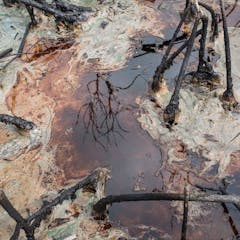
Artículos sobre Regulation
Mostrando 41 - 60 de 414 artículos

Manufacturers don’t usually have to disclose what’s in products like shampoo and household cleaners, but a new study finds that these products can contain hazardous ingredients.

As the government’s oldest consumer protection agency, the FDA has long butted up against drugmakers, activists and politicians. But undermining its work could be harmful to patient health and safety.

Financial crises are inevitably followed by legislation to restructure the banking system, and the ongoing problems with bank stability are likely to be no exception.

Powerful new AI systems could amplify fraud and misinformation, leading to widespread calls for government regulation. But doing so is easier said than done and could have unintended consequences.

Fracking for oil and gas uses millions of pounds of chemicals, some of which are toxic or carcinogenic. Two researchers summarize what companies have disclosed and call for more transparency.

The Biden administration fears that further consolidation in the aviation industry will lead to worse outcomes for consumers – but do mergers necessarily push up prices?

The UK parliament’s Joint Committee on Human Rights has suggested changes to the strikes bill but even those may not go far enough.

The Biden administration is finalizing the first federal limits on two compounds, PFOA and PFOS, in drinking water. These so-called ‘forever chemicals’ have been linked to numerous health effects.

The recent rail accident in Ohio is raising questions about who should be responsible for the aftermath of derailments. Residents impacted by a 10-year-old rail tragedy in Canada still want answers.

Kate Chaney & Michelle Grattan 16.02.2022
This week, Politics with Michelle Grattan features independent MP Kate Chaney. They discuss climate change, integrity, the economy, challenges of the job and more

Energy companies have marketed natural gas as cooks’ favorite for years because homes with gas hookups will also use it for space and water heating.

When a fake charity is uncovered, headlines abound with details of the fraud, while donors are eager to make sure they weren’t one of the victims of the scheme.

To fish the oceans sustainably, nations must reduce bycatch, or accidental catches. But fishermen often resist changing gear or techniques that kill nontargeted species.

Africa’s used vehicle dependency is often attributed to low income and weak regulation.

The EU have introduced a new regulation on the import of products linked to deforestation – but will this reduce deforestation globally?

The US government regulates many industries, but social media companies don’t neatly fit existing regulatory templates. Systems that deliver energy may be the closest analog.

Elon Musk allowing verification badges to simply be bought by anyone is an example of how powerful and misguided trust in logos can be.

President Joe Biden called on Congress to intervene to avoid a strike that he said would ‘devastate our economy.’

Adequate wastewater treatment systems are crucial to ensure that wastewater from the oil industry does less damage.

As California goes on regulating air pollution, other states often follow – including the Golden State’s ambitious goals for cleaning up emissions from trucking.
